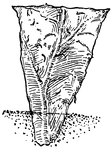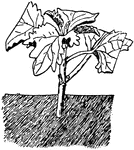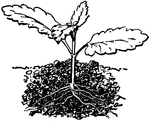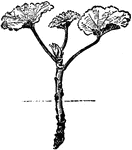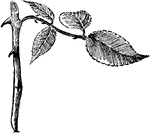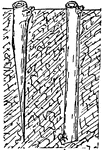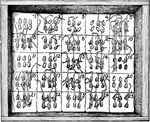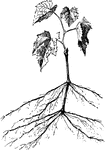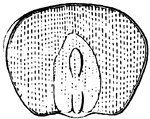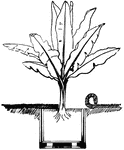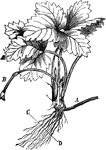Plant Propagation
The Plant Propagation ClipArt gallery provides 52 examples of plants growing from seeds, from cuttings, and by layering techniques. See the Grafting gallery for additional propagation techniques and the Plant Growth gallery for examples of germination and growth from seed.

Egyptian Agriculture
An example of Egyptian agriculture. 1, the reapers; 2, reaper drinking from cup; 3, 4, Gleaners - the…

Begonia Phyllomaniaca
Illustrated is Begonia Phyllomaniaca showing adventitious plantlets. The leaves are four to six inches…

Plant Arising from Begonia
Pictured is a plant arising from the base, or tip, of a triangular leaf cutting of begonia.

Cleft Grafting
Grafting is a horticultural operation which consists in placing together the two cut surfaces of different…

Crown Grafting
Grafting is a horticultural operation which consists in placing together the two cut surfaces of different…

Cutting Pot
"A special contrivance for a cutting pot was brought into notice many years ago by Mr. A. Forsyth. A…

In-Arching (Grafting)
Grafting is a horticultural operation which consists in placing together the two cut surfaces of different…

Inlaying (Grafting)
Grafting is a horticultural operation which consists in placing together the two cut surfaces of different…
Wandering Jew
A cutting of a wandering Jew plant in a glass of water. Wandering Jews are common houseplants with multicolored,…

Layering by Piercing or Notching
In piercing the branch is pierced or punctured with some sharp instrument before being pegged or covered…

Layering by Tonguing or Heeling
This method of layering consists of cutting the branch half way through, below a bud, and making an…
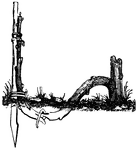
Layering Method of Plant Propagation
Layering is a method of plant propagation by which a part of the plant is bent down and covered with…
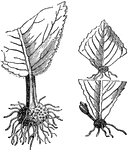
Leaf Cuttings
"Many plans may be propagated by planting their leaves or portions of their leaves as cuttings, as,…

Leaf Cuttings
Plant propagation is the process of artificially or naturally distributing plants. Pictured here is…

Methods of Layering
Part A shows the tonguing or heeling method of layering. This method consists of cutting the branch…
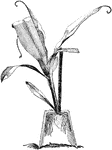
Nepenthes Propagating
Illustrated is a good method of propagating nepenthes. The cutting is placed in an inverted pot. In…

Potato Root Stages
"Regeneration at the leaf-base of potato leaves (Solanum tuberosum). a, roots formed; b, tuber-like…

Propagation by Cuttings
Plant propagation is the process of artificially or naturally distributing plants. Pictured here is…
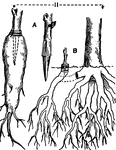
Root Grafting
Grafting is a horticultural operation which consists in placing together the two cut surfaces of different…
Saddle Grafting
Grafting is a horticultural operation which consists in placing together the two cut surfaces of different…
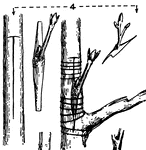
Side Grafting
Grafting is a horticultural operation which consists in placing together the two cut surfaces of different…

Single Eye
"This mode of propagation is performed by cutting the branches into short lengths, each containing one…

Seed Swelling
A method of finding the swelling capacity of seeds. Dry beans are placed in a clay cup with holes to…

Seed Swelling
To show how strong the swelling force of seeds is, this bottle was filled with seeds and water and placed…

Terminal Herbaceous Grafting
Grafting is a horticultural operation which consists in placing together the two cut surfaces of different…
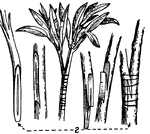
Veneering (Grafting)
Grafting is a horticultural operation which consists in placing together the two cut surfaces of different…
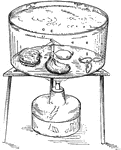
Hot Water
Seeds that are placed in hot water to see where their openings are by the air coming out of them.
Wedge Grafting
Grafting is a horticultural operation which consists in placing together the two cut surfaces of different…
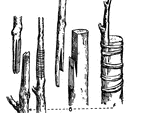
Whip Grafting
Grafting is a horticultural operation which consists in placing together the two cut surfaces of different…

